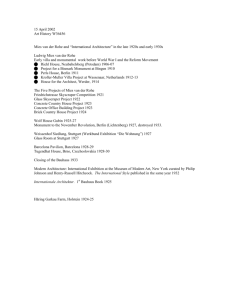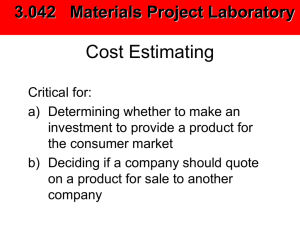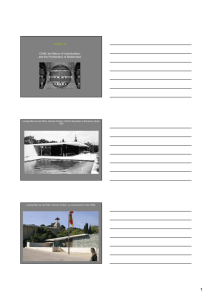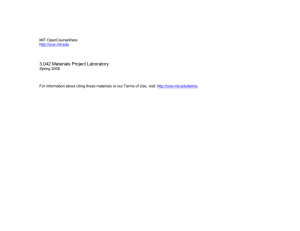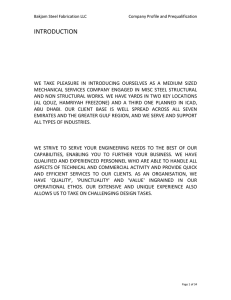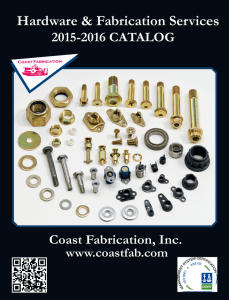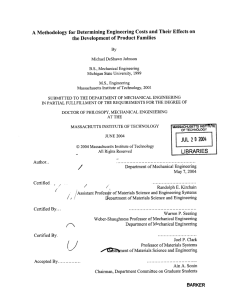Urbarn: an Architecture Student's Introduction to Fabrication by Jordan Inman
advertisement
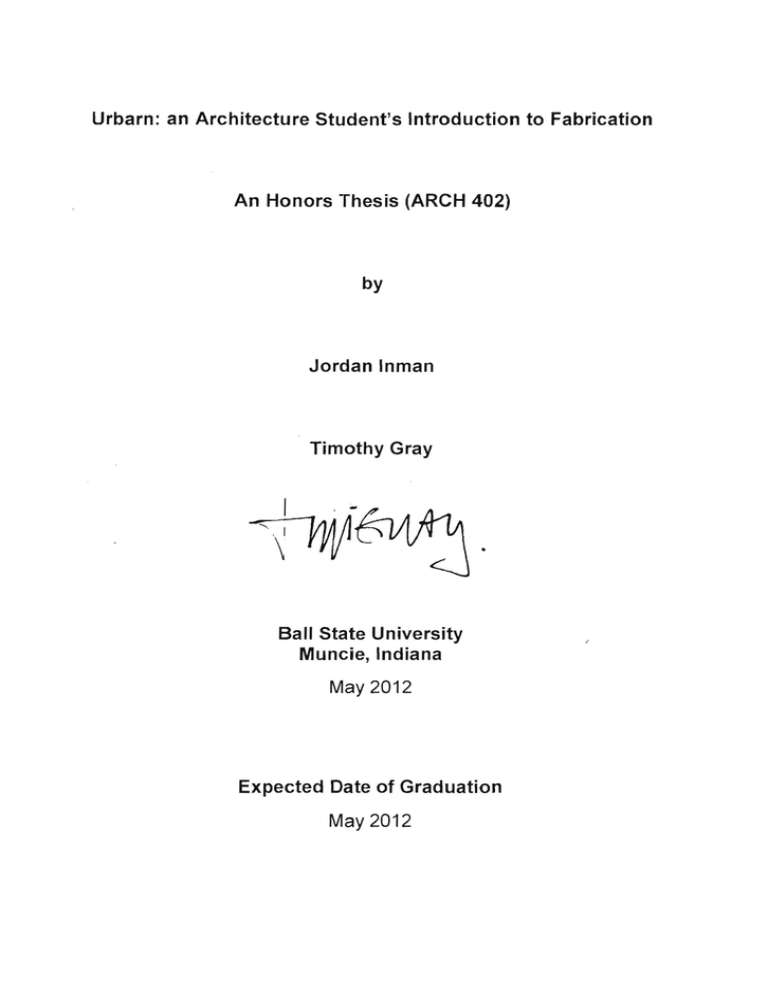
Urbarn: an Architecture Student's Introduction to Fabrication An Honors Thesis (ARCH 402) by Jordan Inman Timothy Gray I ," \W Ball State University Muncie, Indiana May 2012 Expected Date of Graduation May 2012 Urbarn: an Architecture Students Introduction to Fabrication An Honors Thesis (HONRS 499) by Jordan Inman Timothy Gray I - ~ Ball State University Muncie, Indiana May 2012 Expected Date of Graduation May 2012 Abstract ! ... .' Urbarn was a hands-on designlbuild studio in which a group of students, working under professor Timothy Gray, repurposed two old shipping containers to be used as outdoor classrooms. An urban school focused on educating through learning, The Project School has recently rehabilitated the land around the building to become a fully functioning fann. The shipping containers have become the pinnacle of "the Farm Project." My thesis focused on the fabrication of these outdoor classrooms and how working on full-scale projects has influenced the way I look at design and architecture. A few table designs later, we decided it was time to just try and build a table to see what would happen. We built the top out of some reclaimed wood that had been made available to us from Terry Banks, the Project School principal, and the frame out of tube steel. This first iteration taught us a lot about what we needed to do to make the final versions as stable and durable as possible, all while trying to keep the design simple and replicable. After seeing the weaknesses in this prototype, we set to making the frame stronger by adding more bracing. We also decided against the symmetrical design in favor of one that responded to one side of the table that would be hugging a wall, while the other would be open to the walkway of the container. The fabrication of the tables was slow going at first, but after a few days we had a completed tabletop and coinciding frame. It came together well and we were extremely happy with the final product. As we continued to build the frames and wooden tabletops, my welding skills and confidence greatly increased, as well as my ability to harness the natural beauties of wood through work in the wood shop. This meant that the tables not only improved in their quality with each one completed, but that we could produce a table in less time than the one before. My final major contribution to the Urbarn project was a window that was installed to bring more light into the container, as well as provide views out into the gardens. After cutting into the container wall with a reciprocating saw, Hank and I measured out 1" x 2" tube steel to create a frame for structural support. We then used small steel angles welded to steel plates to create a sill for the window to sit up against. After installing the large window, which was donated from Ball State University, I used the reclaimed lumber used for the tabletops to build window jambs after the container had been moved to 4 Indianapolis. This ensured the window would stay in place, as well as adding aesthetic touches used throughout other details in containers. The fact that working on site presented issues not thought about in the design phase is significant to my education as an architect. Since architects consistently rely on other people to construct buildings, which are typically much more complex than what I worked on, it is very easy to overlook issues in the design phase that are bound to show up on the construction site. This means that, although something seems to work on paper or in a computer model, it may not necessarily work using materials with inconsistencies and flaws in the less-than-ideal real world. As great 20 th century architect Mies Van der Rohe said in 1938: "Each material has its specific characteristics which we must understand iJwe want to use it... This is no less true of steel and concrete [than of wood, brick, and stone}. We must remember that everything depends on how we use a material, not on the material itself.. New Materials are not necessarily superior. Each material is only what we make ofit. .. We must be as familiar with the functions of our buildings as with our materials. We must learn what a building can be, what it should be, and also what it must not be." -Mies van der Rohe Getting experience working hands-on with materials and building full-scale objects gave me a new perspective on how an architect needs to think about what he is designing. It also gave me a passion for working with architectural materials in a way not imagined prior to working on Urbarn. Instead of trying to make a material do what you want it to, whether you are building a house, a bench, or a table, I feel true beauty and craft comes from learning what the material wants you to do. Rather than focusing only on the general form of a design, I now feel it is necessary to consider at least as much the details of how 5 certain pieces will be put together. The skills and experiences gained from this semester's design build have greatly impacted how I think about architecture and design, and I look forward to continuing my fabrication skills as I move to Seattle to study Architecture and Furniture Design at the University of Washington. 6 Sources 1. Mies van der Rohe, L. (1970). Inaugural Address: Inaugural Address as Director 0/Architecture at Armour Institute o/Technology, Illinois 1938. Kunstakademiets Arkitektskole.
